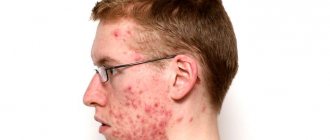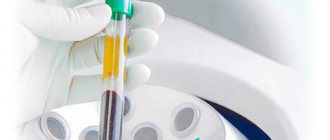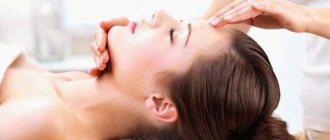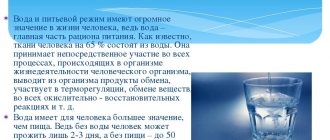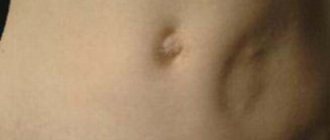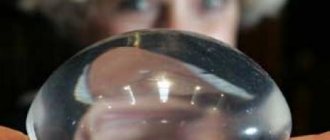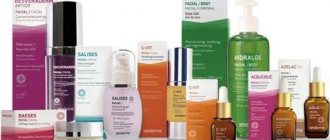Among the variety of beauty and rejuvenation procedures available today, peeling procedures have become especially popular. But such a method of chemical exfoliation as milk peeling deserves special attention.
Lactic acid is an organic fruit acid that is formed during the lactic fermentation of glucose. This is an absolutely natural and natural substance for humans, as it is an intermediate metabolic product in the metabolism of carbohydrates. Lactic acid has many functions, both in the human body and outside it. It is a natural preservative. It is thanks to lactic acid that vegetables and fruits are preserved for the winter, wine and beer, and lactic acid products are formed. From this we can conclude that this substance is absolutely safe for the body and even useful.
Lactanic (lactic) acid is part of the components of the natural moisturizing substance of the skin, maintains a slightly acidic reaction of the skin secretion, which promotes the functioning of normal and beneficial microflora.
Chemical peeling with lactic acid is superficial - that is, it exfoliates only the uppermost dead epidermal cells. It is considered one of the most non-traumatic and gentle procedures (equal to almond). Suitable for any skin type, both very sensitive, prone to dryness, and oily, acne-prone. This peeling is most suitable for young women as part of comprehensive facial skin care.
Properties of lactic acid that are used during milk peeling:
- exfoliative properties;
- pronounced moisturizing effect on the skin;
- lifting effect due to activation of the processes of skin cell division and epithelial renewal, synthesis of collagen and elastin fibers;
- reduction in sebum production, reduction in the number of comedones, acne elements and other inflammatory skin formations;
- even out skin color and lighten it;
- antiseptic and anti-inflammatory effect;
- antioxidant properties.
Melaspeel R | Jesner peeling
Detailed description
DESCRIPTION
Hyperpigmentation (melasma, chloasma, lentigo, dyschromia). A more effective formula than Melaspeel K and KH peels.
All Melaspeels peelings belong to the Jessner peeling family. They contain mixtures of AHA and BHA acids, have a water-alcohol base with a pH from 2.0 to 2.5.
COMPOUND
- 14% Lactic acid.
- 14% Resorcinol.
- 5% Citric acid.
- 5% Kojic acid.
- 2% Salicylic acid.
- 2% Hydroquinone.
APPLICATION
1. Cleanse the skin with milk and HIDRADERM tonic.
2. Degrease the skin with DEGREASING SOLUTION.
3. Apply SILKSES Moisturizing Protector to the corners of the eyes, lips, nose.
4. Apply peeling from 1 to 5 layers with an interval of 3 minutes. depending on the selected peeling depth:
LEVEL I - intracorneal (pink skin),
LEVEL II - intraepidermal (red skin with white areas),
LEVEL III - subepidermal (bright red skin color with white areas).
5. Sealing: Apply ACGLICOLIC CLASSIC CREAM-GEL to the last layer of peeling, sealing the peeling.
6. Apply SCREENSES CREAM SPF 50 tinted sunscreen.
Recommended course of MELASPEEL peelings: 3-6 procedures, once every 2 weeks or once a month.
The force of rubbing or increasing the amount of peeling solution increases the depth of its penetration.
The use of MELASPEEL peels causes a number of visual changes in the skin, which are associated with the depth of penetration of the peeling:
Level 1: mild erythema, pseudofrost. Skin tightness, minimal peeling for 1-2 days or no peeling.
Level 2: skin tightness and erythema, local areas with frost, burning sensation for several minutes. Moderate peeling (3-4 days).
Level 3: intense erythema, significant areas with frost, burning sensation for 15-30 minutes. Lamellar peeling (8-10 days).
The level of penetration is related to skin preparation, thickness of the stratum corneum, sensitivity, number of layers and method of application.
| The entire range of Mediderma (Spain) >>> |
| Cleansing and preparation |
| Chemical peels Mediderma |
| Mediderma liposomal peels |
| Additives to Mediderma peels |
| Serums Mediderma |
| Mediderma masks |
| Post-peeling Mediderma |
| Professional Mediderma |
| Mesotherapy NanoMeso Mediderma |
| Mediderma ampoule preparations |
| Mediderma apparatus |
| Mediderma fillers |
| Microneedling Nanopore Stylus |
| Mediderma lines (Spain) |
| Abradermol - microdermabrasion cream |
| Argipeel – peeling based on arginine |
| Azelac Peel – azelaine peels |
| Degreasing - degreasing solution |
| Dna Recovery Peel – peeling for DNA restoration |
| Ferulac Peel – peelings and preparations based on ferulic acid |
| Fillderma – biorevitalizant and fillers |
| Hidraderm - cleansing milk |
| Ioson – gels for hardware procedures |
| Lactipeel – milk peeling |
| Mandelac – almond peelings and scrub |
| Melaspeel – Jessner peels |
| Meso Cits – serums for microneedling (mesorollers) |
| NanoMeso – mesotherapy drugs |
| Natuvalia – ampoule external preparations |
| Nomelan – phenol peels |
| Nomelan Cafeico – coffee peelings |
| Pyruvic Peel – pyruvic peels |
| Retises – retinoic peels and preparations |
| 3-Retises – new retinoic peeling |
| Rosoil – restoration and healing with rose hips |
| Salipeel – salicylic peels |
| Salipeel Lic – liposomal salicylic preparations |
| Sensyses - liposomal cleansing lotion |
| Sesglicopeel – glycolic peels |
| Ses-Retinal – retinoic peeling |
| Spa Peel – combined keratolytic peeling |
| Target Nanopeel - peeling system with liposomed active ingredients |
| TCA Peel – trichloroacetic peeling |
Superficial peeling with lactic acid is indicated in the following cases:
- symptoms of skin dehydration (peeling, feeling of tightness);
- mild acne;
- cicatricial changes after acne and other causes;
- uneven complexion (areas of hyperpigmentation or hypopigmentation);
- symptoms of hyperkeratosis;
- excess sebum production;
- black dots;
- decreased elasticity and firmness of the skin;
- unhealthy complexion;
- the first signs of photoaging or premature age-related changes;
- a network of unexpressed facial wrinkles.
Contraindications:
Despite the fact that exfoliation with lactic acid is very gentle, there are conditions in which peeling is contraindicated:
- hypersensitivity or allergy to any component of the peeling composition;
- herpetic infection in the acute stage;
- the period of bearing a child and breastfeeding;
- purulent-inflammatory diseases or wounds, erosions in the area of application of the peeling composition;
- acute infectious disease;
- fever;
- hair removal procedure performed the day before, a visit to the solarium, the beach;
- diabetes mellitus in the stage of decompensation;
- severe somatic pathology;
- malignant neoplasms of any location;
- vascular network in the area of peeling application.
Benefits of milk peeling:
Exfoliation with lactic acid has a number of advantages over other similar superficial chemical peels:
- practically does not cause allergic reactions;
- safe method, does not cause discomfort or pain;
- there is no recovery period, no redness, wounds, erosions, or chemical burns are formed;
- it is possible to carry out even without pre-peeling preparation, since the procedure is very gentle and sometimes it itself is used as a preparatory manipulation;
- does not dry out the skin, does not disrupt the composition of its normal microflora;
- Suitable for both dry, normal and oily skin;
- can be performed at any time of the year, there is no photosensitizing effect;
- can be used on any part of the body, not just on the face;
- Suitable for people with dark and hypersensitive skin.
A little about Sesderma
The company was founded in 1989. At that time it was a laboratory headed by Dr. Gabrielle Serrano. Together with a group of professionals, he set a goal to obtain drugs that work at the cellular level. The main active ingredients of Sesderma products are α- and β-hydroxy acids.
Currently, this is a large enterprise producing high-quality products that allow solving aesthetic and dermatological problems at a professional level. For example: sesderma peels are ideal for renewal and rejuvenation.
Motto. This principle ensures a truly individual approach.
Sesderma chemical peels, what are they? It is not so easy to understand more than 40 types of drugs with varying degrees of impact. What they have in common is that the active substance is acid. Depending on its concentration, exfoliation can be superficial, medium and deep.
The first option is the safest and requires virtually no rehabilitation. However, he is unable to solve serious problems.
The median type means that the active components reach the basement membrane. With its help, a noticeable effect is obtained, but recovery may take from 2 to 4 weeks.
The latter type affects the dermis, completely copes with small wrinkles, and makes deep ones invisible. It must be taken into account that eliminating the consequences of a targeted chemical burn will take up to 3 months or more.
